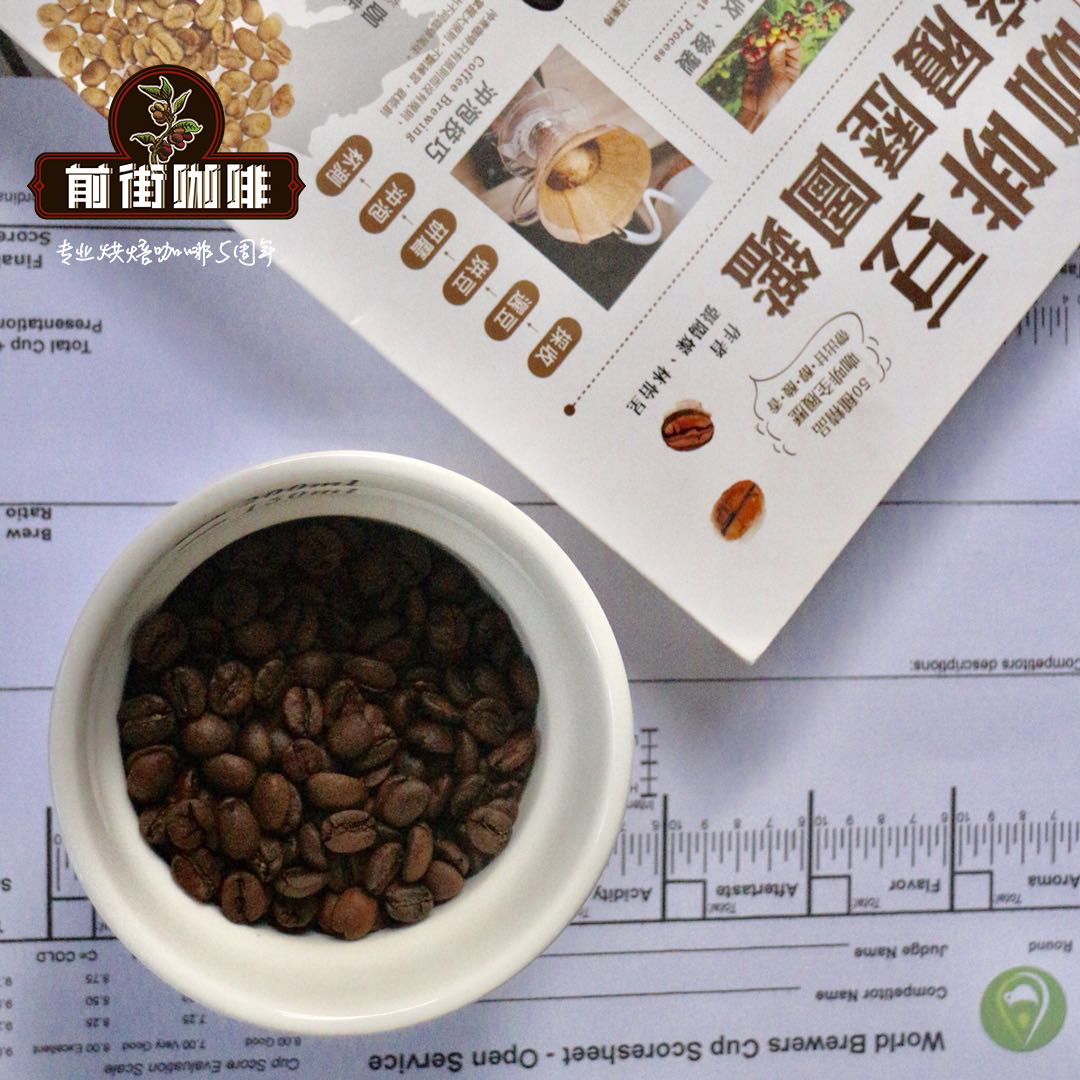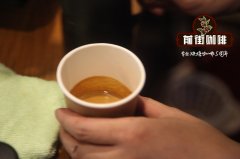Introduction to the Flavor characteristics of the Historical Story of Coffee cultivation in Thika Sika, Kenya Coffee producing area

Professional coffee knowledge exchange more coffee bean information please follow the coffee workshop (Wechat official account cafe_style)
Kenya Kenya
Around 1900, the British introduced coffee to Kenya.
For a hundred years, Kenya has become the world's leading producer of boutique coffee.
Close to Ethiopia, the native place of coffee in the world, the Kenyan flavor has a very unique flavor spectrum.
Even if you taste coffee for the first time, you won't miss the sweet and sour features and the rich and mellow taste.
High-quality Kenyan coffee beans are commonly grown between 1300 and 2100 meters above sea level, just below the equator.
Mainly in the foothills of Mount Kenya and Aberdare. The main planting areas include:
Ruiri
Thika
Kirinyaga
Mount West Kenya (Mt. Kenya West),
Nelly (Nyeri)
Kiambu
Muranga
In 1930, SL28/SL34, a unique Kenyan variety bred by Scott Laboratories (SL) laboratory, was born.
SL28 is a blend of bourbon, mocha and Yemeni Tibica, with excellent flavor, sweetness, balance and complexity, with distinctive citrus and black plum features.
SL34 and SL28 are similar in flavor, with complex and changeable acidity and sweetness, and the taste is richer and cleaner than SL28.
The vast majority of coffee beans are graded by the Kenya Coffee Agency and then sold at the auction.
The grades were divided into three grades: AA+, AA and AB, and were graded according to the particle size uniformity of coffee beans.
No country in the world attaches so much importance to the production of high-quality coffee as Kenya, so Kenya can be regarded as the best model student for coffee producers in the world, because all Kenyan coffee must be uniformly purchased and graded by the Kenya Coffee Bureau (Coffee Board of Kenya, CBK) set up by the government every Tuesday. A public auction will be held in the capital of the officially established Narobi Coffee Exchange (the Nairobi Coffee Exchange).
As a result of this public auction system managed by the government, more than 570000 small coffee farmers across Kenya are encouraged to get a good price as long as they have good quality. In fact, there is still a lot of support for the efforts made by the Kenyan government. The government provides a large number of small coffee farmers with the skills to grow coffee, tutoring nearly 300 agricultural transportation and marketing cooperatives (a bit like Taiwan agricultural production and marketing classes) for better raw bean handling, and the Kenya Coffee Bureau (CBK) devotes itself to the production, quality research, sales and even financial guidance of the coffee industry. It has created the unparalleled charm of the quality and flavor of Kenyan coffee, which is deeply loved by coffee buyers from all over the world. Kenyan coffee is also very popular in the Chinese coffee market. Kenya, located in East Africa, is one of the major coffee producing countries. More than 6 million people in the country are engaged in the coffee industry, mostly in the form of a combination of small farmers and cooperatives. Coffee trees in Kenya are mostly planted at 1400-2000 meters above sea level, and there are Ruiri, Thika, Kirinyaga and Mt in the planting areas. Kenya West, Nyeri, Kiambu and Muranga. The main producing areas are the mountains of Mt.Kenya and Aberdare.
In 1930, the unique Kenyan varieties SL28 and SL34, which were cultivated and named by the "Scott Laboratories" laboratory, were born under such a good research environment. According to botanists in SL laboratory, SL28 and SL34 are genetic variants. SL28 has a mixed pedigree of French missionaries, mocha and Yemeni Tibica.
The goal of cultivating SL28 was to mass produce coffee beans with high quality and resistance to diseases and insect pests.
Although the yield of SL28 was not as large as expected, the copper leaf color and broad bean-shaped beans have a great sense of sweetness, balance and complex flavor, with remarkable citrus and black plum characteristics. SL34 is similar to SL28 in flavor, with a heavier, fuller and cleaner finish than SL28, except for the complex acidity and great sweetness of the finish. SL34 has French missionaries, bourbon, and more Tibica ancestry.
Dou looks similar to SL28, but is more adaptable to sudden heavy rain. It is these two important varieties that lead us to the unique Kenyan style: strong acidity, rich taste and beautiful balance.
The treatment method of raw bean is mainly water washing, the grading method is graded by particle size, and its practical value is determined by cup test. The highest grade coffee beans are AA (large granulated beans left on the 7.2mm sieve), A (the second largest granulated beans left on the 6.8mm sieve), B (medium granulated beans left on the 6.2mm sieve), C (all small granules less than B), PB (oval granulated beans), and TT and T beans that are too light and too small. Grade An and B beans are mixed and exported, called AB. The Kenyan authorities (CBK) are very demanding on coffee beans, using consistent packaging, coupled with good quality and good texture, so coffee lovers will never forget to enjoy a cup of Kenyan coffee.
KIAMBU
Most of the central areas are big landlords. However, with the expansion of urbanization, a large number of large landlords find it more profitable to sell their land for urban development than to become landlords. Coffee beans in this area are named after the place where they are produced, such as Sika Thinka, Ruilu Ruiru, Limulu Limuru and so on. Many big landlords run multinational enterprises at the same time, so farming focuses on higher yields rather than higher quality. However, there are still a small number of small farmers in this area.
Altitude: 1500-2200m
Harvest: first harvest: October to December, second harvest: June to August
Variety: SL-28, SL-34, Batian
Qianjie coffee: Guangzhou bakery, the store is small but a variety of beans, you can find a variety of unknown beans, but also provide online store services. Https://shop104210103.taobao.com
Important Notice :
前街咖啡 FrontStreet Coffee has moved to new addredd:
FrontStreet Coffee Address: 315,Donghua East Road,GuangZhou
Tel:020 38364473
- Prev

Introduction to the coffee producing area of Lekampi, Ethiopia Analysis of the roasting methods of Lakampi coffee beans
Professional coffee knowledge exchange More coffee bean information, please pay attention to coffee workshop (Weixin Official Accounts cafe_style) Ethiopia Lekempti Grade 4 Wild/Sun Lekempti sound: Likan (Pu) Di/Japanese sound: Lakamti, both are used. Altitude: 1700-2200 m (5570-7210 ft) Cup: refreshing acidity, berry fruity
- Next

Kivu coffee growing region Rwanda Coffee growing history stories Flavor characteristics
Professional coffee knowledge exchange More coffee bean information Please pay attention to coffee workshop (Weixin Official Accounts cafe_style) Rwandan coffee beans Rwanda has always been given good coffee growing conditions: high altitude, volcanic soil, rich sunshine and Cabernet Sauvignon. Rwanda is also known as the country of a thousand mountains because many coffee trees are grown in the mountains between 1700 and 2000 meters above sea level.
Related
- Does Rose Summer choose Blue, Green or Red? Detailed explanation of Rose Summer Coffee plots and Classification in Panamanian Jade Manor
- What is the difference between the origin, producing area, processing plant, cooperative and manor of coffee beans?
- How fine does the espresso powder fit? how to grind the espresso?
- Sca coffee roasting degree color card coffee roasting degree 8 roasting color values what do you mean?
- The practice of lattes: how to make lattes at home
- Introduction to Indonesian Fine Coffee beans-- Java Coffee producing area of Indonesian Arabica Coffee
- How much will the flavor of light and medium roasted rose summer be expressed? What baking level is rose summer suitable for?
- Introduction to the characteristics of washing, sun-drying or wet-planing coffee commonly used in Mantenin, Indonesia
- Price characteristics of Arabica Coffee Bean Starbucks introduction to Manning Coffee Bean Taste producing area Variety Manor
- What is the authentic Yega flavor? What are the flavor characteristics of the really excellent Yejasuffi coffee beans?

